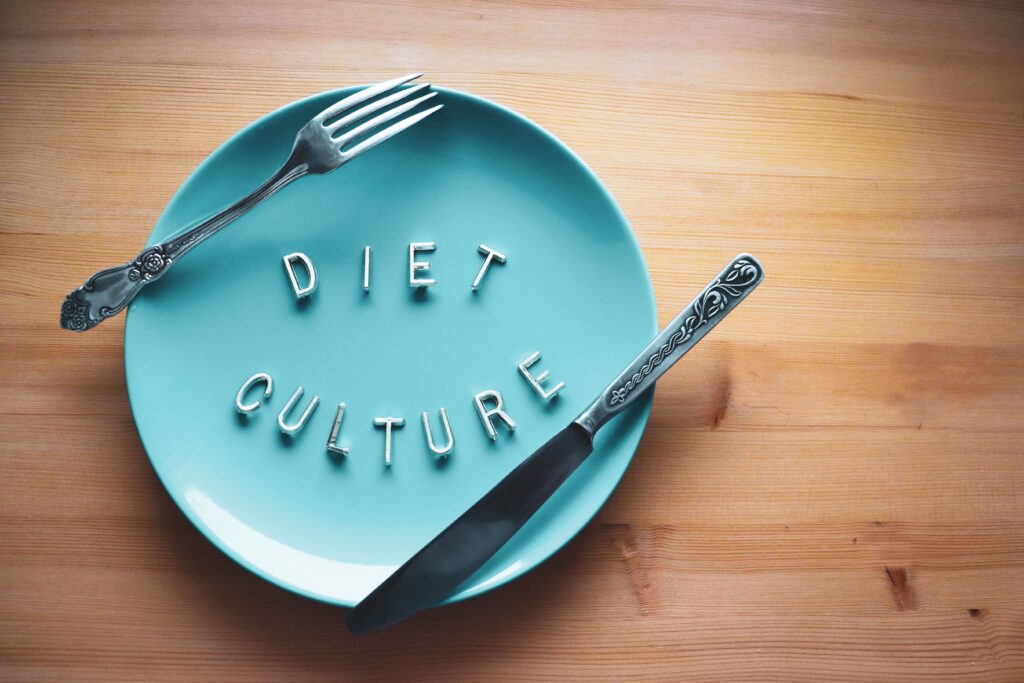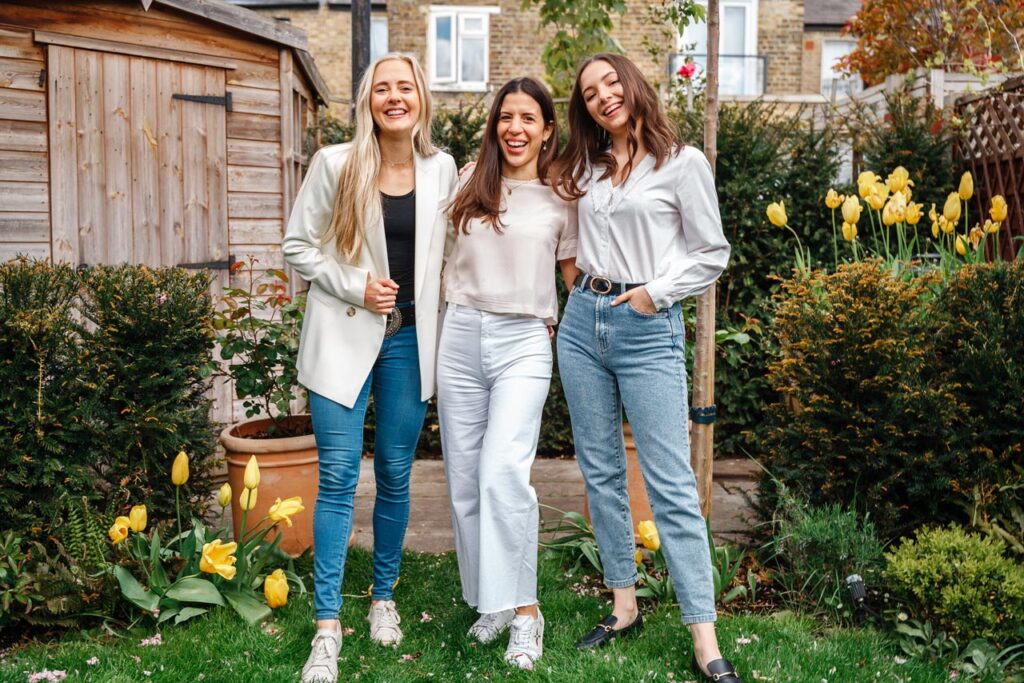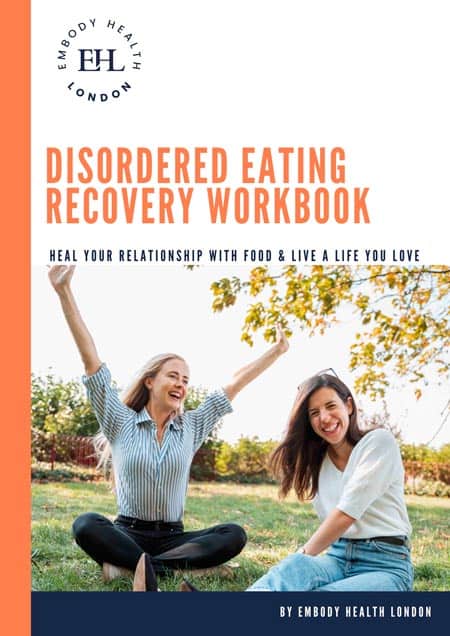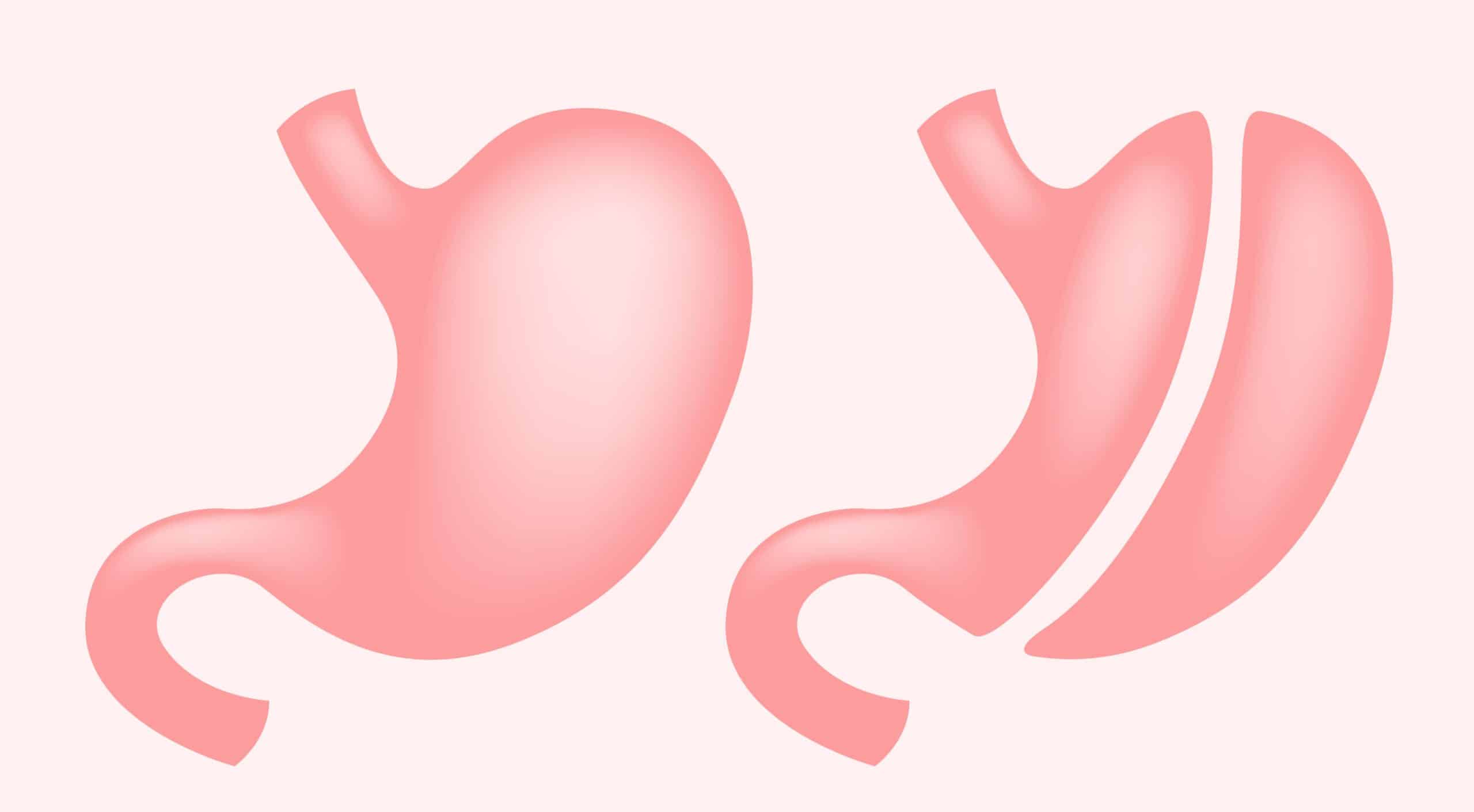3 diet rules you probably live by and what to do about it
We all know by now how sneaky diet culture is. But had you considered that the following behaviours are very much stuck in diet mentality too?
ONE. You are part of the unofficial ‘clean plate club’
Do you find yourself feeling the need to always clean your plate? Perhaps you can’t stand to see food uneaten? Maybe you feel like you have to finish that last bite… no matter how full and uncomfortable you are? If so, it sounds like you are in the clean plate club.
You might be wondering how you got here… and whether it’s actually a bad thing?
Unfortunately the clean plate club is diet culture in disguise and can have some unexpected downsides for your relationship with food and body.
Reasons you may be in the clean plate club:
- You may have learnt this growing up.
You may have been encouraged to finish your pate (particularly certain foods like vegetables) in order to get dessert. For example, you may have been told, “finish your broccoli and you can have dessert”. This is incredibly unhelpful for a child to learn a healthy relationship with food.
As children, we naturally have an immature all-or-nothing thinking style, and this type of comment from our parents/caregivers only further drives an unhelpful black and white food narrative where foods are categorised as “good” or “bad”. When you have to “earn” dessert by finishing your vegetables, the dessert seems a lot more exciting and is put on a pedestal that it doesn’t need to be on.
Not only this, but the broccoli then becomes subconsciously demoted and appears not so exciting because we are obliged to eat it. Food is no longer neutral.
This approach also disregards our body cues of hunger, fullness and satiety. We have to eat past our comfortable fullness levels in order to eat dessert. Over time this can have a negative impact on our relationship with food, and we may no longer feel we even know what we actually like or need.
- You may have been guilt-tripped with “other children in the world are starving”
You may have been told that there are starving people in the world therefore it’s irresponsible to waste your own food. Whilst there are some people in the world experiencing malnutrition due to food insecurity, clearing your plate is not the solution to solve this humanitarian issue.
When we learn to be intuitive eaters, we find ourselves eating with kindness and compassion, and have a much better grasp of what we need, how much and without all the additional guilt or stress. We are blessed if we are able to always have access to food, and therefore we have a fantastic opportunity to develop a healthy relationship with it.
- You may have grown up with food insecurity
Growing up not knowing where your next meal will come from is a very difficult experience. If you have experienced this, you may find that you can have a similar response to food as a dieter has after restricting. When you’re faced with food you can eat, you may feel a sense of urgency and an opportunity to eat as much as possible, because you may worry that you will not have access to these foods in the future.
When we do not have a feeling of abundance with food, whether due to difficulty with access or intentional restriction through dieting, it can increase the likelihood of us later feeling “out-of-control” around food, particularly ones that are higher in energy and more immediately satisfying such as higher in fat and sugar.
Perhaps you find yourself thinking “If I have this one cookie, I may as well eat the entire packet because I won’t be able to have this again”. This is a dangerous thought to follow. By only focusing on “never eating something again” as a way to stop overeating, you will not stop overeating. This thought increases urgency and decreases attunement to your body’s needs.
What’s the good news with all of this?
We can rewrite our food narrative and learn to honour and respect our innate signals. We are all born as intuitive eaters. When we are young we know when we’re hungry and when we are full. All of our food experiences growing up can get in the way of tapping into our own signals of hunger, fullness and satiety.
Instead, we have to start practicing by checking in with ourselves and listening to what our body is communicating to us. Re-writing how you speak to yourself around food is very important and highly empowering. It puts you back in the driving seat. It allows you to find food freedom and body respect.
TWO. You take laps of your living room at the end of the day to ensure you achieve 10,000 steps
We’re often reminded to aim for 10,000 steps a day by popular smartwatches such as FitBits and Apple Watches, our medical doctor, fitness articles and even health campaigns. But where does this so-called “magic number” come from?
It seems to have originated from a marketing campaign for the world’s first commercial pedometer “Manpo-kei” in 19421. Manpo-kei simply means 10,000 steps in Japanese. This number seems to have stuck across the world since, but without originating in any scientific evidence of efficacy.
A 10,000-step target would require approximately 8 km of walking per day which is around 1.5 to 2 hours of walking daily – not many people have the time or energy for that! In fact, this exceeds the World Health Organisation (WHO) recommendations2 for physical activity for adults which is 150 – 300 minutes of moderate activity across the week (approx. 20 – 40 minutes daily).
There has been some research looking at the health benefits of walking 10,000 steps a day since the number caught-on across the world, and overall whilst increasing walking has numerous health benefits, the research seems to confirm that 10,000 is just an arbitrary number.
A research study from Harvard Medical School found that the benefits of increasing step count levelled off after 7,500 steps, with 4,400 steps leading to significantly lower mortality rates anyway3. We know that small increases in physical activity can have significant benefits and is perhaps more realistic for most people.
Perhaps we need to consider whether the preoccupation with hitting an arbitrary number of steps is doing more harm than good? Relying on a number is rigid and mindless and can become compulsive.
This type of activity can disconnect us from our body’s needs, can be a risk factor for disordered thoughts around exercise and eating, and may lead to injury4,5.
It may also lead to stress and feelings of guilt, and we know that using external measures to determine how much movement you do is an attunement disrupter (something that interferes with your ability to hear your body and respond to it).5
A healthy relationship with exercise is more mindful, and pays attention to the process, not just a certain outcome. This mindful movement strengthens our interoceptive awareness, can be more enjoyable and reduces risk of injury – cultivating a healthy relationship with our body all-around!5
What is mindful exercise?4
- Is used to rejuvenate the body, not exhaust, or deplete it.
- Enhances the mind–body connection and coordination, not confusing or dysregulating it.
- Alleviates mental and physical stress, not contributing to and exacerbating stress.
- Provides genuine enjoyment and pleasure, not to provide pain and be punitive.
Engaging in enjoyable exercise means we are more likely to do it more in the future anyway6 – we’ll reap all the benefits without the downsides.
So, drop the arbitrary numbers and start listening to what you enjoy and what your body needs!
THREE. You secretly think that if you were thinner, you would be more attractive or successful
If that’s you my friend, you may be dealing with a dose of the internalised thin ideal.
Everywhere we look in the media and even in casual conversations with friends, we observe that smaller ‘thin’ bodies are viewed as ‘good’ bodies. They are often linked with attractiveness, success, confidence and more.
Whenever we see someone in a larger or fat body in the media, they may be the funny character in a show, or the best friend who likes baking. Both traditional and new media have digitally altered images to promote unrealistic beauty standards, and its often so subtle that an untrained eye would not notice. Concerningly, the weight of female models in the media is often up to thinner than the criteria for anorexia nervosa.7, 8
When we are brought up in a society like this, we automatically internalise the idea that being thin is attractive and simply better. Particularly if we have higher social media use, we are even more likely to experience thin ideal internalisation7. In reality, if you take a moment to look around you #IRL (in real life), you’ll see that us humans come in MANY SHAPES AND SIZES, yet the media only represents a narrow view of body types.
This is problematic because this biased view becomes how we judge others and ourselves. This can become psychologically AND physically damaging whereby research shows us that frequent exposure to media images of the ‘thin ideal’ may contribute to body dissatisfaction, negative moods, and low self-esteem, as well as contribute to the development of eating disorders.9
So, how do we escape this?
Firstly, it may be helpful to remember that the ideal beauty standards for women have changed DRAMATCIALLY over the years, but women haven’t. In the Victorian era, women dressed in a way to promote the hourglass figure. Then come the 1920s Coco Chanel dropped the waistlines bringing the flapper dress into style with straight, slim lines. Women had to bind their breasts to prevent curves showing, and magazines were starting to fill-up with outrageous “weight loss” products.10 Now, in 2021, with the likes of the Kardashians, everyone wants to be curvy AND thin AND muscular… you just can’t win.
Harness your anger at this injustice on women to need to conform to unrelenting, unrealistic standards and be compassionate towards yourself and your body. Your body deserves respect and love. You deserve to nourish yourself without restriction. You deserve to move in a way you enjoy, not just in a punishing way to burn the most calories.
“Every woman has a well-stocked arsenal of anger potentially useful against those oppressions, personal and institutional, which brought that anger into being. Focused with precision it can become a powerful source of energy serving progress and change.” Audre Lorde (1981)
If you want to reclaim your right to eat intuitively and liberate yourself from the shackles of diet culture and unrealistic standards, YOU’RE IN THE RIGHT PLACE. We would love to support you either one-on-one or in a group setting on your journey towards food freedom. Reach out to us at [email protected] to learn more about how we can help.
Zoe Light, BSc, RD
EHL Team x
References:
- http://www.yamax-yamasa.com/aboutus/
- https://www.who.int/news-room/fact-sheets/detail/physical-activity
- Lee I, Shiroma E, Kamada M, Bassett D, Matthews C, Buring J. Association of Step Volume and Intensity With All-Cause Mortality in Older Women. JAMA Internal Medicine. 2019;179(8):1105.
- Calogero, R., & Pedrotty, K. (2007). Daily practices for mindful exercise. In L. L’Abate, D. Embry, & M. Baggett (Eds.), Handbook of low-cost preventative interventions for physical activity and mental health: Theory, research, and practice (141-160). New York, NY: Springer-Verlag.
- Tribole, E. & Resch, E. (2017). Principle nine. Exercise: Feel the difference. In J. Eastman (Ed.), The intuitive eating workbook: 10 principles for nourishing a healthy relationship with food (199-224). Oakland, CA: New Harbor Publications, Inc.
- Rhodes, R.E., & Kates, A. (2015). Can the affective response to exercise predict future motives and physical activity behavior? A systematic review of published evidence. Annals of Behavioral Medicine, 49(5), 715-731. doi:10.1007/s12160-015-9704-5
- Mingoia J, Hutchinson A, Wilson C, Gleaves D. The Relationship between Social Networking Site Use and the Internalization of a Thin Ideal in Females: A Meta-Analytic Review. Frontiers in Psychology. 2017;8.
- Wiseman C, Gray J, Mosimann J, Ahrens A. Cultural expectations of thinness in women: An update. International Journal of Eating Disorders. 1992;11(1):85-89.
- Hawkins N, Richards P, Granley H, Stein D. The Impact of Exposure to the Thin-Ideal Media Image on Women. Eating Disorders. 2004;12(1):35-50.
- Farrell A. Fat shame. New York, NY: New York University Press; 2011.














